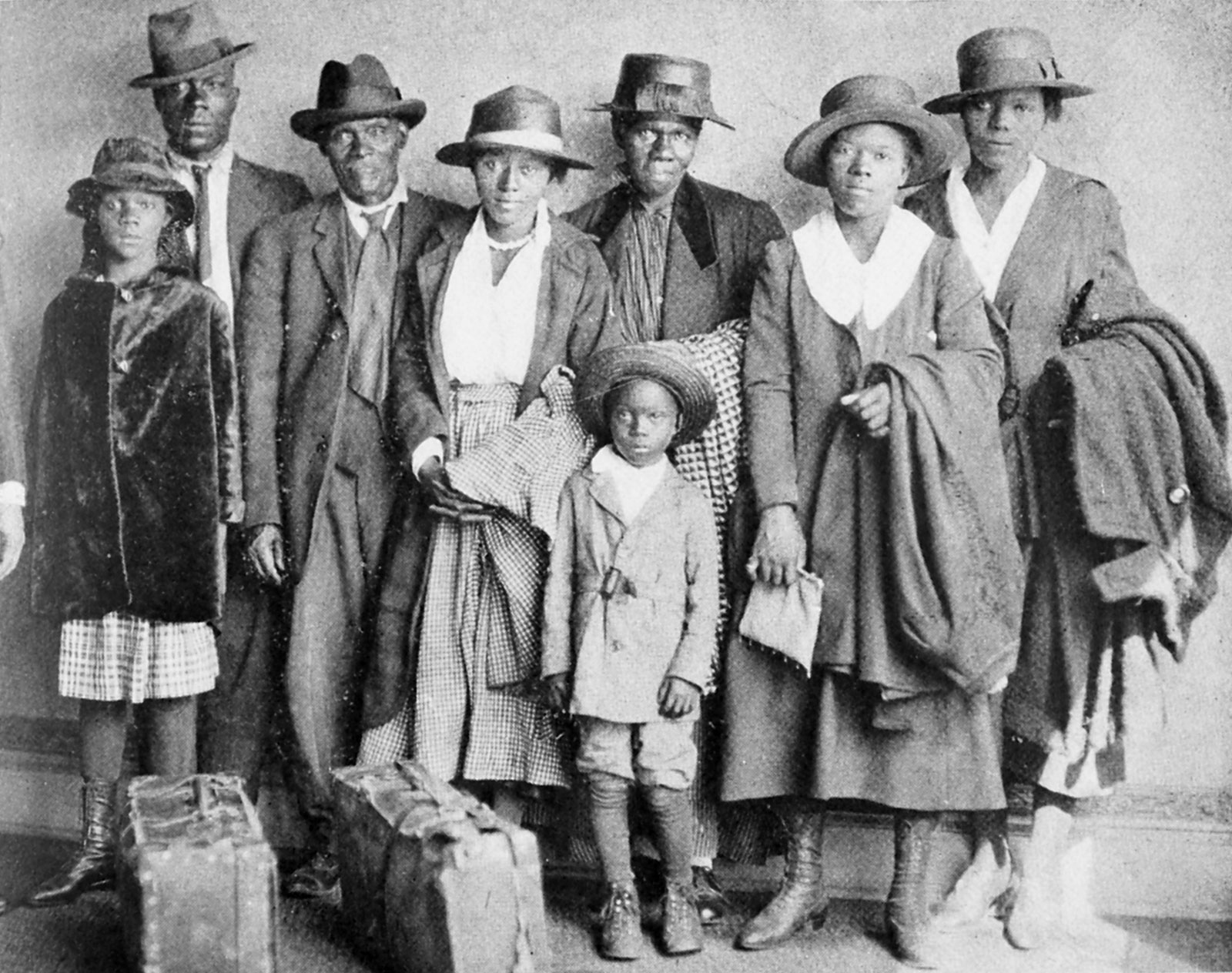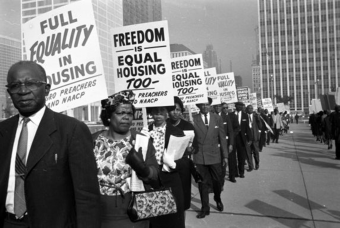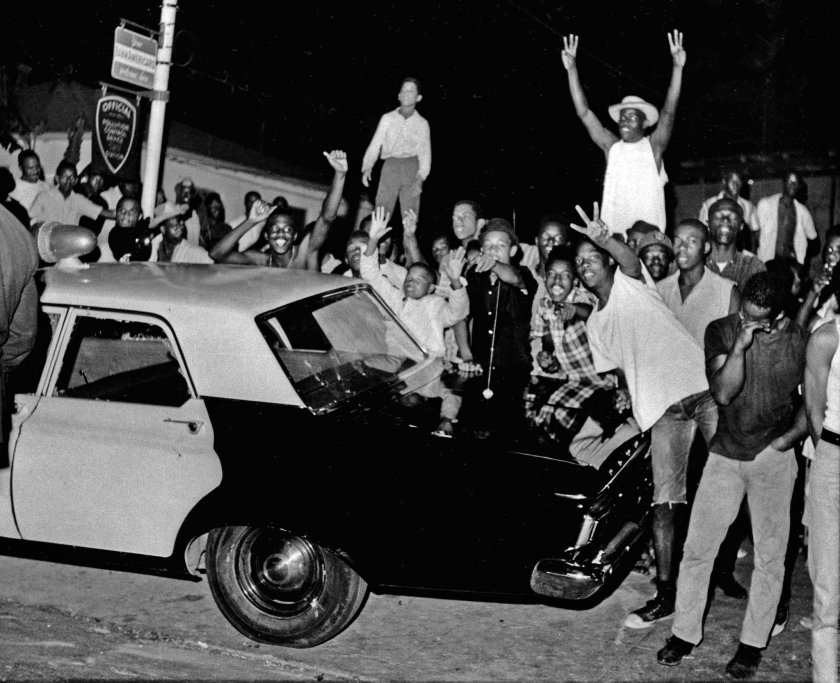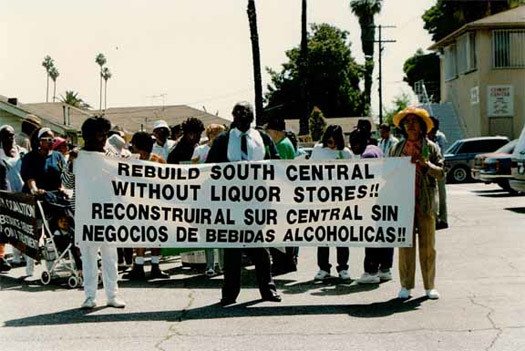
The Great Migration 1916

The Great Migration 1916
The roots of South Central Los Angeles date back to the beginning of
the 20th Century. Starting in 1916, millions of African Americans
moved out of the rural Southern United States to the urban Northeast,
Midwest, and West. This movement is known as the Great Migration. I n
the wake of Executive Order 8802 and lured by the prospect of jobs,
relatively low cost of housing, and seemingly less-overt racism,
hundreds of thousands of African Americans migrated to Los Angeles.
Notably, this period of time was also the prime of Central Avenue as a
Jazz District and the West Coast Harlem. The Dunbar Hotel at 43rd and
Central was where jazz luminaries like Billie Holiday, Duke Ellington,
Ella Fitzgerald and Lester Young would stay when they visited Los
Angeles.
The Federal Housing Act 1934

The Federal Housing Act of 1934
The discriminatory policies codified by the Federal Housing Act of 1934
and Home Owners Loan Corporation left long term damaging effects on Black
and Latinx Americans as restrictive covenants and redlining forced them to
congregate in neighborhoods that would be labeled as “blighted.” By 1940,
approximately 70 percent of the Black population of Los Angeles was confined
to the Central Avenue corridor and relied upon the Avenue to meet all of its social needs.
Chavez Ravine 1951

Chavez Ravine 1951
The Battle of Chavez Ravine refers to the controversy surrounding government acquisition of
land largely owned by Mexican-Americans in Los Angeles' Chavez Ravine. Because the communities
of Chavez Ravine were considered slums, the city of Los Angeles decided to plan for redevelopment.
Most were reluctant to leave their homes but were promised new low-rent housing. However, in 1953,
LA officials opposed the federal housing project because they viewed federally funded housing as a
form of communism. Thus, Chavez Ravine was “to be used for public purposes only” and evolved to the
Dodgers Stadium. The Mexican American residents of Chavez Ravine watched their homes get destroyed as
they never got new housing, forcing them to congregate in or near South Central.
Interstate 10 1956

Interstate 10 1956
During the 1950s, the Santa Monica Freeway, also known as Interstate 10, was built
through predominantly neighborhoods of color, displacing thousands of homes that belonged
to Black and Latinx Los Angeles residents. One notable neighborhood that was destroyed by
the freeway construction was Sugar Hill, a wealthy community in present day South Central
that belonged to primarily African American residents. The road could have been built without
cutting through Sugar Hill, however, in order to miss it, it was said that the route would
have to cut through fraternity and sorority row areas around USC. USC’s sorority and fraternity
row still stands while Sugar Hill was demolished. In addition to the construction of Interstate 10,
freeway encroachments account for 19% of East Los Angeles’ land use, an area with a significant Mexican American population.
Watts Rebellion 1965

Watts Rebellion 1965
On August 11, 1965, Marquette Frye was arrested in South Central for driving under the influence.
In response to Marquette’s mother’s reaction, the police bashed her in the head with a baton and
arrested Marquette's two brothers. A mob was forming while all the situation unfolded and after
the police left, the mob grew even bigger. The next day, riots broke out in South Central. The five
day riot that ensued resulted in 34 deaths, 1,032 injuries, 3,428 arrests and over $40 million in
property damage. A Report by the Governor's Commission on the Los Angeles Riots established that
the root causes for the riots were poor schools, high unemployment levels and inferior living conditions
for the African Americans in Watts. Though they brought these issues to light, they made few policy
improvements that would change the long term standing of those in South Central.
Los Angeles Riots 1992

Los Angeles Riots 1992
Unrest began in South Central Los Angeles on April 29, after a trial jury acquitted
four officers of the Los Angeles Police Department (LAPD) for usage of excessive force
in the arrest and beating of Rodney King, which had been videotaped and widely viewed in
TV broadcasts. The rioting took place in several areas in the Los Angeles metropolitan area,
as thousands of people rioted over six days after the verdict's announcement. By the time
the riots ended, 63 people had been killed, 2,383 had been injured, more than 12,000 had been
arrested, and estimates of property damage were over $1 billion, much of which disproportionately
affected Koreatown, where most of the rioting occurred. The Los Angeles riots symbolize a modern
era of civil unrest, as police brutality and racial discrimination is something we are still working
to resolve today. In addition, the riots also significantly changed South Central’s demographics as it prompted
many working-class Black families to emigrate. A community that was once majority African-American is now two thirds Latinx.








